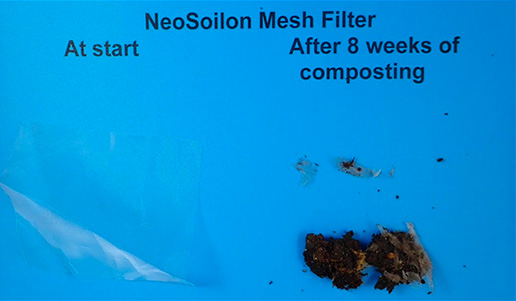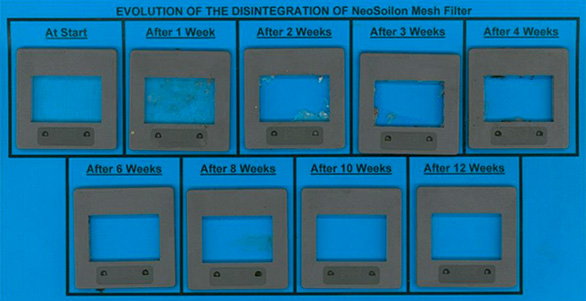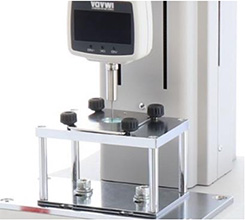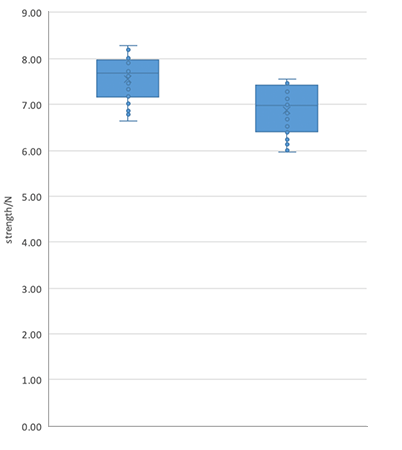FAQs on Non-GMO PLA mesh NeoSoilon®
Q.What’s the difference between compostable and biodegradable?
Shortly speaking, compostable is a word with more strict requirements that covers biodegradable. So that is to say, a compostable material must be biodegradable, but a biodegradable material may not be compostable.
To give some more scientific details, a compostable material should pass the tests not only on biodegradability, but also on heavy metals, disintegration, quality of the final compost, eco-toxicity, etc. There are international and region standards, including ISO 17088, EN 13432, ASTM D6400 that have almost the same definition of compostable.
Q.Is NeoSoilon® compostable?
Yes. NeoSoilon® is certified by Industrial OK Compost (TUV Austria), Compostable (Seedling mark by European Bioplastic) and Compostable (BPI) schemes, which means it complies with the standards mentioned above, and is proved that 90% of its weight can biodegrade within 180 days under industrial composting conditions (approx. 58°C or 140°F).
Q.What exactly happens during the composting for NeoSoilon® ?
NeoSoilon® can decompose rapidly when put into industrial composts but quite slowly in usual circumstances. When put into industrial compost, the biodegradable rate is accelerated by microorganisms, but the degradation speed depends on various conditions of temperature, moisture and alkaline material.

Fig1: Photo taken in lab during composting test of NeoSoilon Mesh Filter, cut into 10 cm × 10 cm pieces, at start and after 8 weeks of composting.

Fig 2: Photo taken in lab for the evolution of the disintegration of NeoSoilon Mesh Filter in slide frames, in which the mesh is almost invisible after 4 weeks.
Q.Is NeoSoilon® recyclable and renewable, or bio-based?
Yes. Since NeoSoilon® is made by PLA that originates only from sugar cane, it is a kind of bio-based material that uses renewable resources.

Is it strong enough for teabag packaging?
Yes. Polylactic acid (PLA), as a kind of bioplastic, has a melting point of around 170°C, and it is globally widely used as food contact tools and packages from industrial usage to daily use as 3D printing, including forks, plates and also bags. And NeoSoilonR is a plained woven mesh that uses PLA filaments, which are strong enough for holding teas. It is very stable in ambient temperatures.
Q.What is the shelf life?
NASA has introduced PLA mesh as a teabag filter to the world for over 16 years, and factual performance shows that it can have a shelf life for as long as two or three years under common storage conditions, which is usually longer than the tea ingredient packed inside.
Internal tests of puncture strength of PLA mesh have been carried periodically, and data shows that even when comparing the PLA mesh after storage of about three years, the reduction of the mesh’s puncture strength is less than 10%, while keeping above 6 N, which is quite sufficient for single-brew teabag usage.


Fig 3: Puncture strength test result with NeoSoilon mesh with storage time of 42 days(left) and 1042 days(right). Both strength values keep above 6 N.
Throughout our communications, unless otherwise specified, the terms bio-based and compostable or biodegradable refer to EN16785-1 and EN13432 standards respectively. It is the responsibility of the article producer to ensure that claims on final products are suitable for your local laws and decrees. Check your locally available end-of-life infrastructure to ensure that legitimate end-of-life claims are made on the final product.